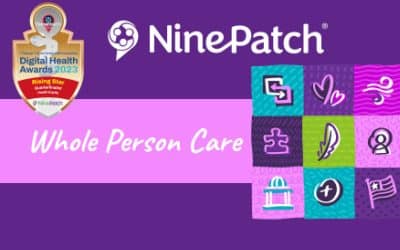
How can states improve sdoh data sharing to support patient and consumer engagement? Efforts to merge clinical, claims, patient data, and integrate social needs platforms with electronic health record systems (EHRS) can require agreements between multiple parties. A lack of standardized data and coding for social determinants of health are also complicating factors.
The good news is that organizations, groups, and coalitions are working to identify consistent social determinants of health (SDOH) data-sharing methods across clinical and social care. If you are a provider on the frontline, you may be concerned about managing risk, delivering outcomes, and adding additional workflows for multi-level consents, screenings, referrals, and follow-up care.
Community-based organizations (CBOs) may be concerned about participating in programs to receive referrals they may not be able to fulfill. Not all CBOs have ample staffing, sustainable funding, or the technology to communicate with clinical providers. Additionally, many social good organizations may not have staff with medical backgrounds who are familiar with the terminology used by clinical organizations.
Data Sharing Complexities
SDOH data collection and sharing can be a complex puzzle. Clinical and social care providers use data for different purposes. While CMS Rules and demonstrations focus on interoperability, clinical efforts, data analysis for risk adjustments, outcomes and reducing costs, community based organizations use data to support grant reporting and funding.
Community based organizations devote efforts to support consumers experiencing social determinants of health circumstances that result in daily struggles. In contrast clinical providers identify and treat physical, mental, and behavioral health concerns that might benefit from referrals to and care coordination with a variety of providers.
Social determinants of health factors can create a common thread for communication between clinical and social care providers. Research confirms that siloed and uncoordinated care can negatively affect vulnerable and at-risk populations who may be high-need, high-cost patients.
Benefits of Care Coordination
“According to Medical Expenditure Panel Survey (MEPS) data, 5% of the population accounted for nearly half of all health spending with an average of $61,000 in health expenditures annually. On average, patients with higher needs experience greater expenditures on all types of health services.”
Patients are people with various life circumstances—not solely numbers in a patient record or medical chart. Access to longitudinal records gives physicians access to data that supports diagnosis, treatment recommendations, and medication management by providing up-to-date information. On the other hand community based organizations can provide valuable support for life’s daily challenges.
In an ideal world, clinical providers can easily access a patient’s health and social care data with a few clicks in a chart. These workflows should make it easy to review a patient’s chart and coordinate care between primary and specialty care, regardless of in or out of network status.
Sharing data that connects medical records to social care data in an EHR can also help facilitate care management, care coordination and communication. For example, NinePatch® Whole Person Care sdoh software solution facilitates care team communication and coordination for individual and family profiles, multi-level consents, assessments, and closed loop referrals.
The Impact of Social Needs
The impact of SDOH circumstances can manifest as health-related social needs (HRSN) in clinical settings that include hospitals, physician practices and clinics, long-term and post-acute care, and mental and behavioral health settings.
For example, individuals with complex health conditions or multiple chronic diseases are at a higher risk of hospitalization. They may also experience more extended hospital stays and frequent hospital readmissions.
Persons experiencing homelessness or reentry have even greater challenges managing everyday life and coordinating health care needs. Elderly populations experience financial constraints, a lack of transportation, and being homebound. Children and youth experiencing adverse childhood events (ACES) may be in foster care or interacting with juvenile justice systems.
Improving health equity is a lofty goal that a single organization or technology solution working in a silo cannot achieve. For SDOH data sharing to be successful across communities, states, and nationwide, organizations must create shared goals and work together for the common good.
How states can improve SDOH data sharing:
- Establish local community and state partnerships or coalitions to convene, govern, fund, and implement SDOH and HRSN efforts.
- Work toward health information exchange (HIE) integration between all clinical and social care providers.
- Revisit reimbursement options for how well doctors manage patients’ health and reduce costs.
- Link reimbursement systems with community-based organizations who will commit to complete sdoh assessments and participate in care coordination efforts to resolve SDOH and HRSN needs.
- Provide clinical and social care organizations with access to point-of-care context about individual health and life circumstances through bi-directional data sharing.
- Support patient access to software platforms that can increase engagement and participation in health and social care programs.
- Ensure that programs are financially sustainable.
In some states, government agencies—including health and human services offices, behavioral health, mental health, public health, and other organizations—fund SDOH efforts through state appropriations, federal or foundation grants, and other sources.
At a national scope, multisector partnerships have shown success in advancing SDOH. CDC programs like REACH and Getting Further Faster aim to prevent diseases, address social determinants of health, and promote health equity in communities.
Data Sharing Agreements
State health information exchanges (HIEs) facilitate electronic data sharing between healthcare systems and providers. This data is used for analysis, reporting, billing, and other uses to enhance patient-centered care. Some states are actively creating health data utilities (HDUs) to advance HIE data exchange and analysis to the next level.
Additionally, software vendors provide various electronic systems for managing health records, coordinating care, billing, and analyzing data. Hospitals, healthcare systems, ambulatory care centers, home health care, skilled nursing, hospice and assisted living communities may also have programs that they use that may not integrate or share data.
Let us look at four projects supporting interoperability, health equity, and SDOH data sharing at the national and state level with the overall goal of improving patient and consumer care.
1 The Sequoia Project
The Sequoia Project Data Interoperability Matters initiative is working to solve the challenges of sharing data across the Unites States on three levels:
- Provider-to-provider health information exchange
- Provider-to-public health agency information exchange
- Healthcare entity-to-consumer information exchange
The Sequoia Project convenes a wide range of stakeholders:
- Healthcare providers
- Health IT developers
- Health information networks and exchanges
- Federal, state, and local government
- Health plans and payers
- Consumers and patients
- Standards developers, public health, and others
Ongoing work by the Sequoia Project continues to advance interoperability. A recent Data Usability Taking Root Initiative is advancing efforts to make healthcare data useful.
The Sequoia Project and the American Health Information Management Association (AHIMA) launched the program in July 2023. Multiple health and health information technology (HIT) organizations are providing support.
2 The Gravity Project
The Gravity Project focuses on interoperability specific to using and sharing SDOH data. A partnership with Civitas announced in 2023 offers information about four new early-stage pilot projects in Arizona, Colorado, New York, and Oklahoma supported by the Robert Wood Johnson Foundation.
The goal of these pilots focuses on the health promotion of tribal communities, standardized SDOH screening and referral, expanded access to resources for patients, and implementing statewide standards for sharing and evaluating social needs data.
3 AHC Model Results in 28 States
Twenty-eight states participated in the the Accountable Health Communities (AHC) model to improve social factors that impact health. These efforts have provided valuable insights into social care integration. The AHC model addressed five main social needs: lack of food, unstable housing, transportation issues, utility problems, and interpersonal violence.
The second evaluation report confirms the following:
- A reduction in emergency department (ED) visits among Medicaid and fee-for-service (FFS) Medicare beneficiaries
- The most prevalent health-related social need was food insecurity, ICD-10 Z59.41
- While individuals with food insecurity were more likely to engage with community services, the program did not solve this concern
- Seventy-seven percent of eligible people accepted help with finding care. However, more than 50% did not connect with community organizations to address their concerns.
Food insecurity, a subset of ICD-10 Z 59.0, relates to housing and economic circumstances. Other factors can complicate access to and the ability to pay for food. These include financial problems, transportation, and housing insecurity—all core issues of the AHC model. In addition, problems related to family circumstances or support (Z63.0) can affect the stability of daily living circumstances.
AHC participants had difficulties accessing community services to address sdoh. Transportation issues, ineligibility, long wait times, and limited resources reduced participation levels. These challenges made it hard for organizations participating in this program to address health care and social challenges.
4 CMS State Innovation Models (SIM)
Medicaid’s value-based care initiatives have made progress through the CMS State Innovation Models Program: Round Two. This initiative included primary care management screening and referral for social determinants of health needs.
Eleven model test states (CO, CT, DE, ID, IA, MI, NY, OH, RI, TN, WA) achieved the following outcomes:
- Designed and implemented payment and delivery models that yielded favorable impacts on spending and utilization
- Increased the use of value-based care (VBC) models, primarily in Medicaid Managed Care organizations
- Invested in primary care transformation and behavioral health integration that increased provider capacity to provide quality care
- Developed processes to tackle health-related social needs in communities and for patients by linking clinical and community resources
This report also confirms that two states, Michigan, and Iowa, created systems for identifying, screening, and referring patients with health-related social needs.
State Progress to Link Clinical and Social Care
CMS and state Medicaid initiatives have announced requirements for social care assessments. States and organizations are working on connecting social care assessments with coding systems like ICD-10 Z codes, LOINC, or SNOWMED. These efforts will automatically link assessment results to codes for analysis, reporting, and reimbursements.
Informaticists use this data for population health, risk analysis, workflow design, and to measure impact. Receiving usable data from organizations completing the assessments can support treatment recommendations necessary to document outcomes and substantiate results. Additionally state departments of health, public health, and academia have an interest in this data.
Translating Data to People and Everyday Life
Data analysts may see patients as numbers on a screen or a sheet of paper. Patient information translates to data collection points linked to a medical record number (MRN) or master patient index (MPI). However, these data points are humans with various needs and problems.
Considering the results from the AHC report, clinicians may hesitate to refer to social care organizations. If sufficient people or financial resources do not exist in local communities, individuals will become frustrated or hesitant to participate in the assessments that offer no solutions to their problems.
The staff of CBOS can support clinicians in all specialties—health, behavioral health, and mental health— by completing the last mile of work if they are well staffed, financially resourced, and electronically connected.
Last mile support translates in part to consistent and ongoing efforts to establish trusting relationships. Community health workers and staff can increase engagement and the willingness of consumers to participate in SDOH assessments that translate to resolving health related social needs.
A warm smile and a kind approach can break down barriers and reduce the shame consumers might feel about needing help that cannot be shared or resolved during a 15-minute doctor’s appointment.
Community-based organizations add a human touch to address social determinants of health circumstances. These efforts can support HIEs, HDUs, health systems, data analysts, and states to create policy and payment mechanisms that support SDOH data sharing to improve health equity and outcomes for all populations.
Join NinePatch to support SDOH data sharing efforts in your state. Schedule a demo today.
Stay Up To Date
NinePatch® Recognized as Quarterfinalist for the Digital Health Hub Foundation: Digital Health Awards
NinePatch is a Rising Star in the Health Equity Track KNOXVILLE,...
SDOH and Care Coordination Programs and Funding
SDOH care coordination and funding is available from federal, state,...
Whole Person Healthcare Model Insights and Opportunities
A whole person healthcare model combines physical, behavioral, and...




